What I Wish I Knew a Year Ago About SEO This Week Episode 189 - Website Architecture Example
Facts About Website Architecture Template Revealed
Table of ContentsThe Basic Principles Of Website Architecture Best Practices Some Known Details About Website Architecture Example The Facts About Website Architecture UncoveredWebsite Architecture Design Fundamentals Explained
Picture this situation: You check out a site and hang out trying to find the details you need. You click one link, then another, and once again, and once again But you show up empty you can't find anything helpful. Whether you're a product owner or designer, you do not desire your site to be a labyrinth with absolutely nothing but annoying blind alleys.
It deals with the turmoil, producing a clear structure for a website, an app, or a program. In this post, we'll explain how you can produce outstanding information architecture. When you show up at a brand-new place, you require something to guide you. If you're investing a weekend in an unfamiliar city, you need to speak with a map.
It's the very same with any unfamiliar area: You don't desire to lose time and get lost, so you need an assistance. is the science of structuring material as it is used to news sites or blog sites, online stores, booking apps, downloadable software, and so on. The objective of information architecture is to classify the material in a clear and easy to understand way and arrange it according to relations between the content pieces, allowing users to find what they need with less effort.
Getting My Website Architecture Template To Work
Details architecture belongs of interaction style that thinks about content, context, and users. This suggests that user needs, organization objectives, and different kinds of material must be taken into consideration while structuring an item's details. Normally, info architecture style falls under the care of UX and UI designers or a details architect.
 The 6-Minute Rule for Website Architecture
The 6-Minute Rule for Website Architecture
An information architect who works along with a UX designer can concentrate exclusively on information architecture design, while a UX designer dedicates more time to research. In this case, a designer develops a number of deliverables, which we will explain in the section on the actions of IA development. No matter the title, an individual who works on details architecture must start with the guidelines that help to accomplish the goal of IA.
To develop a strong info architecture, you must begin with thorough research study, so everything starts with learning your users' requirements and behaviors. The 5 actions of information architecture advancement The objective of this stage is to discover a user's requirements. You must work with a customer profile and the results of consumer and stakeholder interviews.
The Greatest Guide To Website Architecture
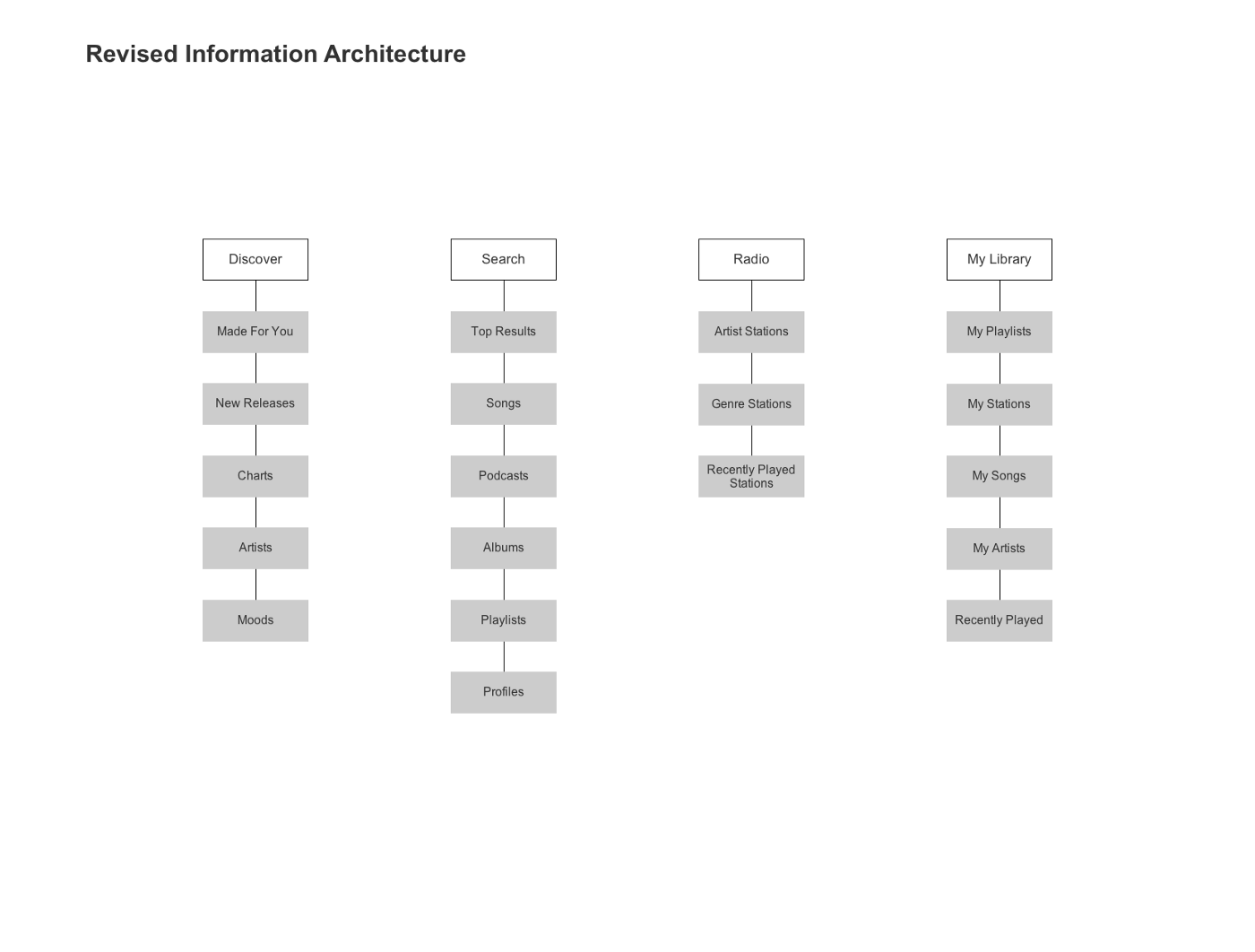 The 8-Minute Rule for Web Architecture Design
The 8-Minute Rule for Web Architecture Design
Due to the fact that these tasks belong to a UX designer or business expert, you require the results of their activities. At the end of this phase, you'll end up with a user profile and user flow that highlight the way a user thinks and interacts with an item. When you have all the required info about the item and individuals who use/will usage it, you can go to the next action.
The main activities to perform at this stage are content inventory and content audit. Let's look at them. The goal of this activity is to produce a list of info components on all the pages of a site http://www.bbc.co.uk/search?q=website architecture diagram and classify them by subject and sub-topic. This consists of the following products: Headings and subheadings Texts Media files (images, video, audio) Documents (doc, pdf, ppt) URL-links of the pages These aspects are listed in a material design template with their attributes included.
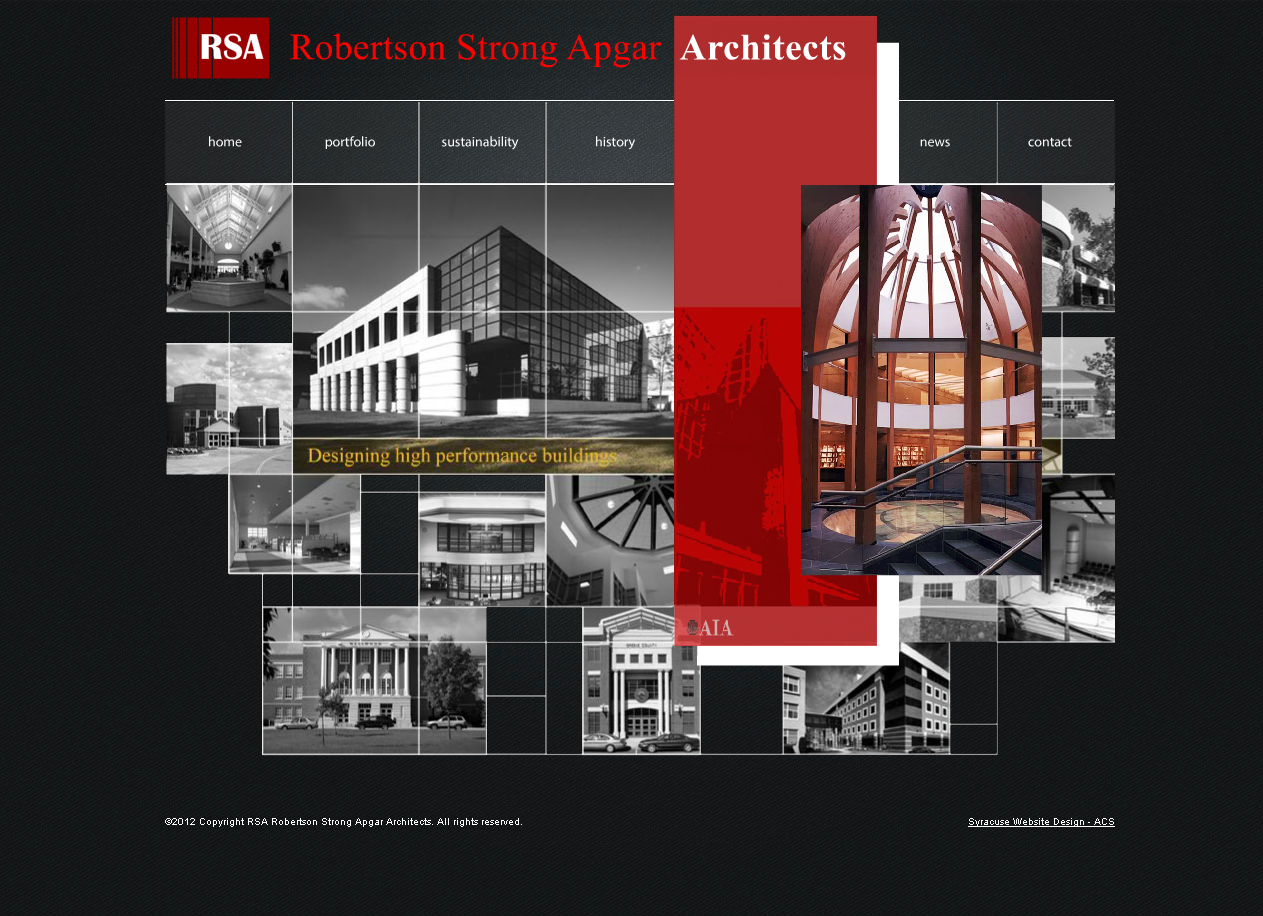 Not known Incorrect Statements About Website Architecture Best Practices
Not known Incorrect Statements About Website Architecture Best Practices
Now, scrap the least essential items, update some pieces of content, and rearrange them for the next actions. This activity applies both to new items and to app or website redesigns. The next action includes grouping material into different classifications. For this purpose, you will need the help of potential users.
The Best Strategy To Use For Website Architecture Example
You require a taxonomy to do it. Taxonomy is another word for classification. When it comes to IA, it's an effort to group various disorganized pieces of details and provide descriptions. Taxonomization used on the Airbnb websiteSource: The most popular and the most crucial technique that allows taxonomizing the material is card sorting.
The point of the activity is to see directly how users perceive the product's material pieces. Card sorting is normally carried out in small groups of 15-20 individuals, where they have to explain and arrange 30-60 cards with pieces of details into different classes. The cards contain subjects that need to be classified, or pieces of content that need to be described.
The participants classify subjects as they choose and in the order that makes sense to them. This approach enables great architecture you to comprehend how the users believe in regards to category. Open type is utilized to develop brand-new products. with pre-designed categories. This method of card sorting is typically applied in redesign.

20 Fun Facts About ideas
See This Report about Website Architecture
Table of ContentsMore About Website ArchitectureThe Only Guide to Website ArchitectureA Biased View of Website Architecture DesignNot known Facts About Website Architecture Best Practices
composed on papers. When creating cards, use the outcomes of material stock. Different subjects have to be on different index cards. They need to have numbers and some must have blank spaces, so the participants can develop their own names for categories. As an outcome, you'll see the approximate structure of a product and proceed with the very first prototypes.
Every site or an app requires a strong navigation system that assists a user discover what structure they need. As quickly as you have the outcomes of card sorting activities, you will understand how to embody and classify the content in reality. This step embraces navigation design, labeling, and website mapping.
When dealing with navigation, keep in mind that no matter which pages the visitors come from, they need to have the ability to discover what they require. A navigation system includes lots of elements buttons, menus, and tables of content. There are 4 primary type: reveals the info hierarchy from primary elements to their sub-categories.
 Website Architecture Template Fundamentals Explained
Website Architecture Template Fundamentals Explained
A drop-down menu on ASOSSource: present throughout all the pages, this navigation makes it possible for the users to get to the primary page from every area, for instance, left- or right-sided, top-centered, sticky menus, footers, or hamburger menus. Left-sided menu on The New York TimesSource: The programs the navigation of a specific location: a page or a part of a site and its content.
The 8-Minute Rule for Website Architecture Design
Regional navigation on the Oxford University websiteSource: associates with particular material, like document, page, video-audio things, or associated items. Remember to make a clickable logo that directs a user right to a homepage. These types can match each other, but the primary concept of great navigation is to avoid overloading with assisting elements.
It can navigate a user through a multi-stage process or a complex website. You can select the finest option for place and menu type by performing an A/B and multivariate testing for conversion optimization. The correct label offers users correct concept of the category they are handling. During this treatment, name all parts of IA with headings and subheadings.
Examples are the very best description, so show your labels. Expedia website labeling with names and iconsSource: Expedia When navigation and labeling are ready, detail the whole structure, creating a site map. Site https://www.washingtonpost.com/newssearch/?query=website architecture diagram map development can be preceded by a mind map. Let's look at the function of mind mapping in this treatment.
As a tool, a mind map is really helpful for direction, permitting somebody to comprehend the structure of the content by sensible sequence and to develop associations. Use it to an app or a site to visually represent the entities of a product and follow the logical structure of the content.
Website Architecture Best Practices Can Be Fun For Everyone
However first, you have to select the hierarchy design pattern. Design pattern is a method to structure the material. It allows you to select the direction at the very start of IA structure or website redesign activities. There are several IA style patterns, which we explain listed below: one that serves a single function, for example, downloading an app or offering contact info.
This pattern appropriates for brochure-like sites. Flat structureSource:, et al. consists of a house page and similarly important subpages. This type is among the most typical options for websites since it's basic, familiar, and deep enough for a lot of use cases. Index page pattern similar to index pages pattern, however more branchy: Each subpage has one or more subpages.
 The Buzz on Website Architecture Design
The Buzz on Website Architecture Design
Rigorous hierarchy pattern joins a number of types of hierarchies in case the info from one subpage overlaps the content of another. Co-existing hierarchy pattern As soon as you have actually picked design pattern, you can apply it together with the outcomes of card sorting in website mapping. A sitemap is a method to show the hierarchy of content and display screen navigation.
It's a map of the material and categories of a website. A portfolio website sitemapSource: On a sitemap, you visualize the entire hierarchy of content. You can make it on paper or using different tools like WriteMaps, MindNode, Scapple, MindManager, XMind. Show the sitemap to stakeholders and send it to designers so that they can understand what to do next: Exist any important modifications that have to be used prior to an item goes into production? Still, there is one more phase before production prototyping.
Some Ideas on Website Architecture You Should Know
While a sitemap is a scheme of content hierarchy, a wireframe embodies the final appearance. A wireframe is a schematic representation of a site or an app that shows the navigation and user interface of a website. An IA wireframe shows all the pages and screens of an item, with headings, tags, labels, and grey boxes where the material will be placed.

The Most Underrated Companies to Follow in the SEO This Week Episode 189 Industry
4 Easy Facts About Website Architecture Example Shown
Table of ContentsSome Ideas on Website Architecture Template You Need To KnowWebsite Architecture Template for DummiesNot known Details About Web Architecture Design Excitement About Website Architecture Design
Imagine this situation: You visit a website and spend time trying to find the info you require. You click one link, then another, and once again, and again However you come up empty you can't discover anything helpful. Whether you're an item owner or designer, you do not desire your site to be a maze with absolutely nothing but irritating blind streets.
It deals with the chaos, creating a clear structure for a website, an app, or a program. In this post, we'll describe how you can create outstanding information architecture. When you show up at a new place, you require something to assist you. If you're investing a weekend in an unfamiliar city, you need to speak with a map.
It's the exact same with any unknown location: You do not wish to waste time and get lost, so you require an assistance. is the science of structuring content as it is used to news websites or blogs, online stores, scheduling apps, downloadable software application, etc. The goal of info architecture is to classify the material in a clear and easy to understand method and organize it according to relations in between the content pieces, enabling users to find what they require with less effort.
Things about Web Architecture Design
Information architecture is a part of interaction style that thinks about content, context, and users. This indicates that user requirements, service goals, and different kinds of material should be taken into account while structuring an item's information. Typically, details architecture design falls under the care of UX and UI designers or an information designer.
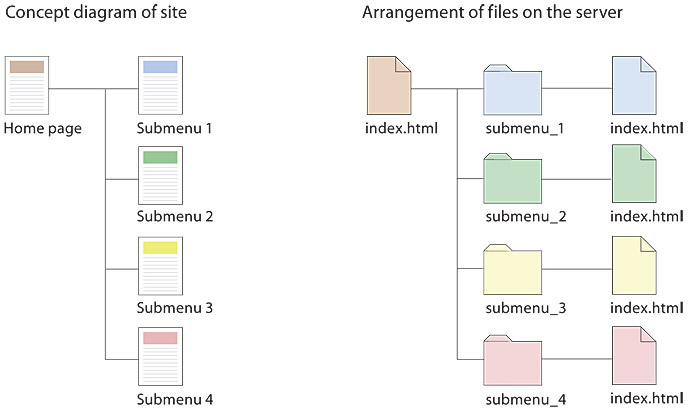 http://www.thefreedictionary.com/website architecture diagram style="display:none" itemprop="caption">The Ultimate Guide To Website Architecture Design
http://www.thefreedictionary.com/website architecture diagram style="display:none" itemprop="caption">The Ultimate Guide To Website Architecture Design
An information architect who works in addition to a UX designer can concentrate solely on information architecture design, while a UX designer dedicates more time to research. In this case, an architect creates a number of deliverables, which we will explain in the section on the actions of IA development. Despite the title, an individual who works on information architecture should begin with the guidelines that help to attain the objective of IA.
To create a strong details architecture, you need to begin with thorough research study, so it all starts with learning your users' needs and habits. The 5 actions of info architecture development The goal of this stage is to learn more about a user's requirements. You must work with a client profile and the outcomes of customer and stakeholder interviews.
The Basic Principles Of Website Architecture Design
 Facts About Website Architecture Best Practices Revealed
Facts About Website Architecture Best Practices Revealed
Because these jobs belong to a UX designer or service analyst, you require the results of their activities. At the end of this stage, you'll wind up with a user profile and user flow that illustrate the way a user believes and communicates with an item. When you have all the needed information about the product and individuals who use/will use it, you can go to the next step.
The primary activities to perform at this phase are content inventory and content audit. Let's look at them. The objective of this activity is to develop a list of info aspects on all the pages of a site and classify them by topic and sub-topic. This includes the following items: Headings and subheadings Texts Media files (images, video, audio) Files (doc, pdf, ppt) URL-links of the pages These aspects are listed in a content template with their qualities consisted of.
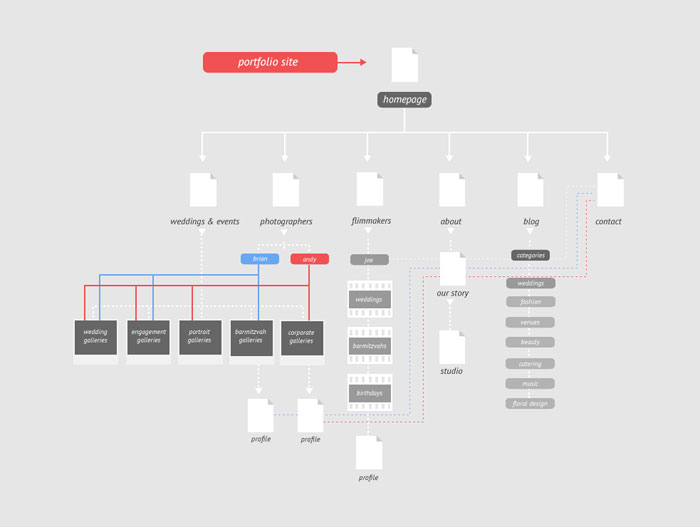 Facts About Website Architecture Design Revealed
Facts About Website Architecture Design Revealed
Now, ditch the least important products, update some pieces of material, and great architecture reorganize them for the next steps. This activity is appropriate both to brand-new items and to app or site redesigns. The next action includes organizing content into various classifications. For this function, you will require the assistance of possible users.
More About Website Architecture Best Practices
You require a taxonomy to do it. Taxonomy is another word for classification. In the case of IA, it's an effort to group different unstructured pieces of details and provide descriptions. Taxonomization used on the Airbnb websiteSource: The most popular and the most essential technique that enables taxonomizing the content is card sorting.
The point of the activity is to see directly how users view the item's material pieces. Card sorting is normally performed in little groups of 15-20 participants, where they need to describe and sort 30-60 cards with pieces of details into different classes. The cards include subjects that need to be categorized, or pieces of material that need to be explained.
The individuals classify subjects as they choose and in the order that makes sense to them. This approach permits you to comprehend how the users believe in terms of category. Open type is used to develop brand-new items. with pre-designed categories. This method of card sorting is usually used in redesign.

The Worst Advice You Could Ever Get About website architecture
Little Known Facts About Website Architecture Design.
Table of ContentsOur Website Architecture Best Practices IdeasThe smart Trick of Website Architecture Best Practices That Nobody is Talking AboutWebsite Architecture for DummiesSome Of Website Architecture Template
Picture this circumstance: You check out a site and invest time looking for the info you require. You click one link, then another, and again, and again But you come up empty you can't find anything helpful. Whether you're an item owner or designer, you don't want your website to be a labyrinth with absolutely nothing however annoying blind streets.
It handles the chaos, producing a clear structure for a site, an app, or a program. In this article, we'll describe how you can develop outstanding info architecture. When you get to a new location, you need something to assist you. If you're investing a weekend in an unknown city, you have to speak with a map.
It's the same with any unknown location: You don't want to waste time and get lost, so you need a guidance. is the science of structuring content as it is used to news sites or blogs, online shops, scheduling apps, downloadable software application, etc. The goal of information architecture is to categorize the material in a clear and reasonable method and arrange it according to relations between the content pieces, permitting users to discover what they need with less effort.
Everything about Website Architecture Diagram
Details architecture is a part of interaction style that thinks about material, context, and users. This indicates that user requirements, business goals, and various types of content need to be taken into account while structuring an item's information. Typically, info architecture style falls under the care of UX and UI designers or a details architect.
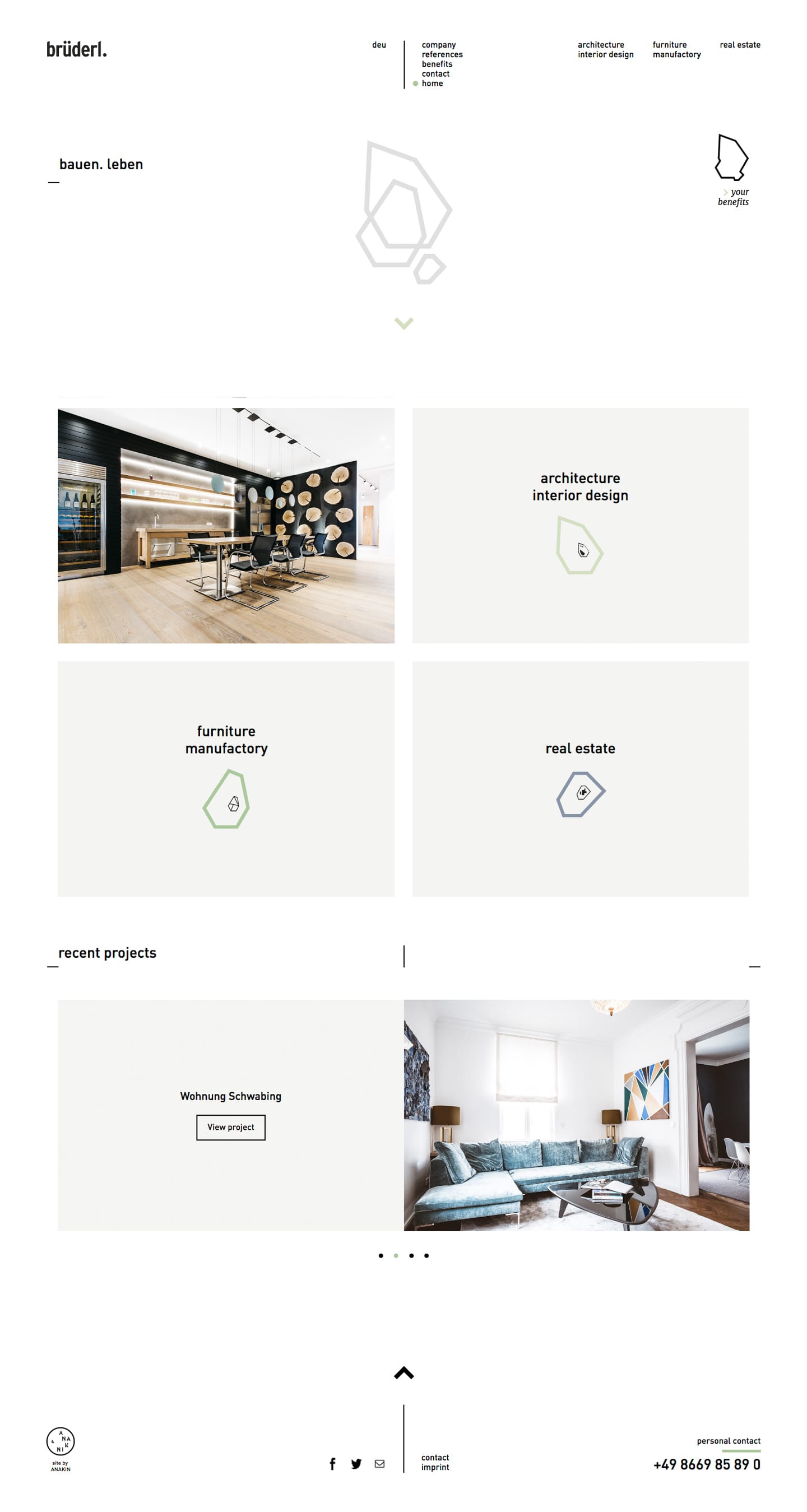 Everything about Website Architecture Diagram
Everything about Website Architecture Diagram
An info designer who works in addition to a UX designer can concentrate exclusively on details architecture design, while a UX designer commits more time to research. In this case, a designer develops a number of deliverables, which we will explain in the section on the actions of IA advancement. No matter the title, an individual who deals with info architecture should start with the rules http://query.nytimes.com/search/sitesearch/?action=click&contentCollection®ion=TopBar&WT.nav=searchWidget&module=SearchSubmit&pgtype=Homepage#/website architecture diagram that help to accomplish the objective of IA.
To produce a strong details architecture, you need to begin with extensive research, so it all begins with learning your users' requirements and habits. The five actions of details architecture development The objective of this phase is to discover about a user's requirements. You should deal with a customer profile and the outcomes of customer and stakeholder interviews.
Website Architecture Best Practices for Beginners
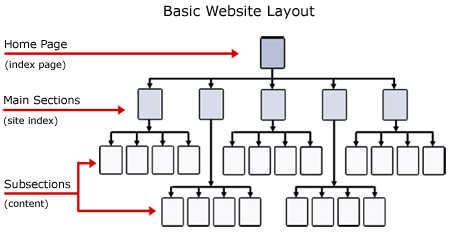 Some Known Factual Statements About Web Architecture Design
Some Known Factual Statements About Web Architecture Design
Due to the fact that these jobs belong to a UX designer or organization analyst, you need the results of their activities. At the end of this stage, you'll wind up with a user profile and user circulation that illustrate the method a user believes and communicates with a product. When you have all the needed details about the item and individuals who use/will usage it, you can go to the next action.
The primary activities to perform at this stage are content stock and content audit. Let's look at them. The objective of this activity is to produce a list of details aspects on all the pages of a site and categorize them by topic and sub-topic. This includes the following items: Headings and subheadings Texts Media files (images, video, audio) Files (doc, pdf, ppt) URL-links of the pages These components are listed in a content design template with their attributes included.
 Rumored Buzz on Web Architecture Design
Rumored Buzz on Web Architecture Design
Now, ditch the least crucial items, upgrade some pieces of material, and reorganize them for the next actions. This activity is applicable both to brand-new products and to app or site redesigns. The next action includes grouping content into different categories. For this structure function, you will need the help of possible users.
Getting The Website Architecture Design To Work
You require a taxonomy to do it. Taxonomy is another word for classification. When it comes to IA, it's an effort to group various unstructured pieces of details and provide descriptions. Taxonomization applied on the Airbnb websiteSource: The most popular and the most essential strategy that enables taxonomizing the material is card sorting.
The point of the activity is to see straight how users view the item's material pieces. Card sorting is normally conducted in little groups of 15-20 participants, where they need to explain and sort 30-60 cards with pieces of info into different classes. The cards contain topics that need to be classified, or pieces of content that need to be described.
The participants classify topics as they pick and in the order that makes sense to them. This approach allows you to understand how the users think in regards to category. Open type is utilized to develop new products. with pre-designed categories. This approach of card sorting is normally used in redesign.

Why It's Easier to Succeed With architects Than You Might Think
An Unbiased View of Website Architecture Best Practices
Table of ContentsWebsite Architecture Template Fundamentals ExplainedWebsite Architecture Diagram - The Facts9 Simple Techniques For Website Architecture DiagramGetting The Website Architecture Best Practices To Work
composed on notepads. When creating cards, use the outcomes of material inventory. Separate topics have to be on different index cards. They ought to have numbers and some ought to have blank spaces, so the participants can develop their own names for classifications. As a result, you'll see the approximate structure of a product and continue with the very first models.
Every website or an app needs a strong navigation system that assists a user discover what they require. As quickly as you have the outcomes of card sorting activities, you will understand how to embody and classify the content in reality. This action welcomes navigation design, labeling, and site mapping.
When working on navigation, remember that no matter which pages the visitors originate from, they need to have the ability to find what they require. A navigation system consists of numerous components buttons, menus, and tables of content. There are 4 primary type: reveals the details hierarchy from primary elements to their sub-categories.
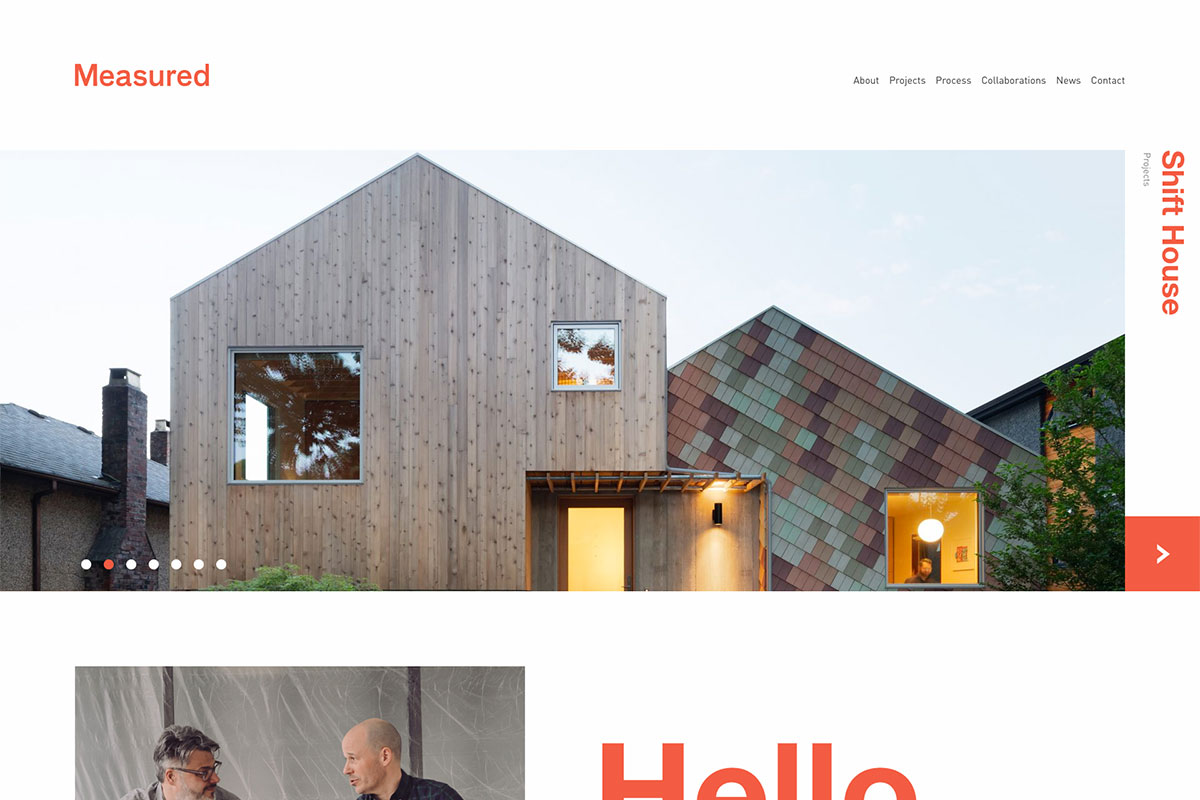 The Ultimate Guide To Website Architecture
The Ultimate Guide To Website Architecture
A drop-down menu on ASOSSource: present across all the pages, this navigation makes it possible for the users to get to the main page from every location, for instance, left- or right-sided, top-centered, sticky menus, footers, or hamburger menus. Left-sided menu on The New York TimesSource: The programs the navigation of a specific area: a page or a part of a website and its material.
The Ultimate Guide To Website Architecture Design
Regional navigation on the Oxford University websiteSource: relates to particular content, like file, page, video-audio things, or associated items. Remember to make a clickable logo design that directs a user right to a homepage. These types can match each other, however the primary principle of excellent navigation is to prevent straining with guiding elements.
It can browse a user through a multi-stage procedure or an intricate website. You can choose the best choice for location and menu type by conducting an A/B and multivariate screening for conversion optimization. The correct label gives users appropriate conceptualization of the category they are handling. During this procedure, name all parts of IA with headings and subheadings.
Examples are the very best description, so highlight your labels. Expedia website labeling with names and iconsSource: Expedia When navigation and labeling are prepared, detail the entire structure, producing a site map. Website map development can be preceded by a mind map. Let's take a look at the role of mind mapping in this procedure.
As a tool, a mind map is extremely useful for instruction, enabling someone to comprehend the structure of the material by rational series and to establish associations. Use it to an app or a site to aesthetically represent the entities of an item and follow the sensible structure of the material.
The Definitive Guide for Website Architecture Best Practices
But initially, you need to select the hierarchy style pattern. Style pattern is a method to structure the material. It allows you to choose the direction at the very start of IA building or website redesign activities. There are several IA style patterns, which we explain below: one that serves a single purpose, for example, downloading an app or supplying contact info.
This pattern appropriates for brochure-like websites. Flat structureSource:, et al. consists of a web page and equally essential subpages. This type is one of the most common choices for websites because it's simple, familiar, and deep enough for most utilize cases. Index page pattern comparable to index pages pattern, but more branchy: Each subpage has one or more subpages.
 Top Guidelines Of Website Architecture Template
Top Guidelines Of Website Architecture Template
Stringent hierarchy pattern http://edition.cnn.com/search/?text=website architecture diagram unites several great architecture types of hierarchies in case the info from one subpage overlaps the content of another. Co-existing hierarchy pattern As quickly as you have selected design pattern, you can apply it together with the results of card sorting in site mapping. A sitemap is a way to highlight the hierarchy of content and display navigation.
It's a map of the content and classifications of a site. A portfolio website sitemapSource: On a sitemap, you visualize the entire hierarchy of material. You can make it on paper or using different tools like WriteMaps, MindNode, Scapple, MindManager, XMind. Program the sitemap to stakeholders and send it to designers so that they can understand what to do next: Exist any essential modifications that need to be applied prior to an item goes into production? Still, there is another stage before production prototyping.
An Unbiased View of Website Architecture Design
While a sitemap is a scheme of content hierarchy, a wireframe embodies the final look. A wireframe is a schematic representation of a site or an app that shows the navigation and user interface of a site. An IA wireframe shows all the pages and screens of a product, with headlines, tags, labels, and grey boxes where the content will be put.

15 Best Blogs to Follow About SEO This Week Episode 189 - Website Architecture
The 45-Second Trick For Website Architecture Best Practices
Table of ContentsWebsite Architecture Best Practices Can Be Fun For AnyoneThings about Website Architecture DiagramIndicators on Website Architecture Best Practices You Need To KnowWebsite Architecture - Truths
Picture this circumstance: You go to a website and invest time trying to find the details you need. You click one link, then another, and again, and again But you show up empty you can't discover anything beneficial. Whether you're an item owner or designer, you do not desire your site to be a labyrinth with absolutely nothing but irritating blind streets.
It manages the chaos, producing a clear structure for a site, an app, or a program. In this short article, we'll describe how you can produce outstanding information architecture. When you reach a new place, you require something to direct https://en.search.wordpress.com/?src=organic&q=website architecture diagram you. If you're investing a weekend in an unfamiliar city, you have to seek advice from a map.
It's the exact same with any unknown location: You do not wish to waste time and get lost, so you need a guidance. is the science of structuring content as it is applied to news sites or blog sites, online shops, reserving apps, downloadable software, and so on. The goal of info architecture is to categorize the material in a clear and reasonable way and arrange it according to relations between the material pieces, enabling users to find what they require with less effort.
The smart Trick of Website Architecture Diagram That Nobody is Discussing
Information architecture is a part of interaction design that thinks about material, context, and users. This implies that user requirements, service objectives, and different types of content need to be taken into consideration while structuring a product's information. Normally, information architecture design falls under the care of UX and UI designers or an information designer.
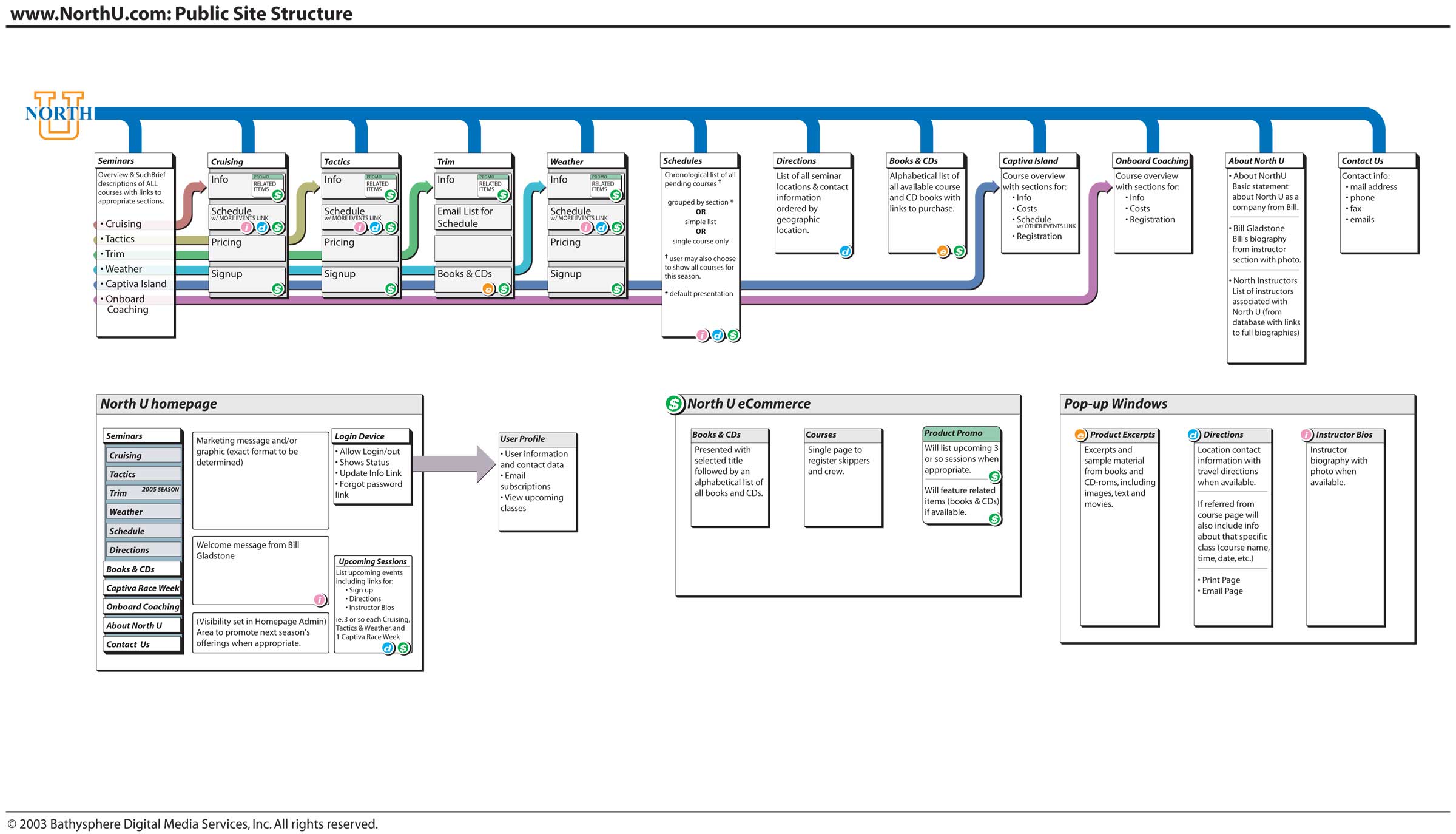 Things about Website Architecture Design
Things about Website Architecture Design
An information designer who works together with a UX designer can concentrate exclusively on information architecture design, while a UX designer commits more time to research. In this case, a designer creates a number of deliverables, which we will describe in the section on the steps of IA advancement. Despite the title, an individual who works on details architecture need to begin with the rules that assist to attain the goal of IA.
To develop a strong info architecture, you must begin with thorough research study, so everything starts with discovering your users' requirements and habits. The five actions of details architecture advancement The objective of this phase is to find out about a user's needs. You should work with a client profile and the outcomes of consumer and stakeholder interviews.
A Biased View of Website Architecture Best Practices
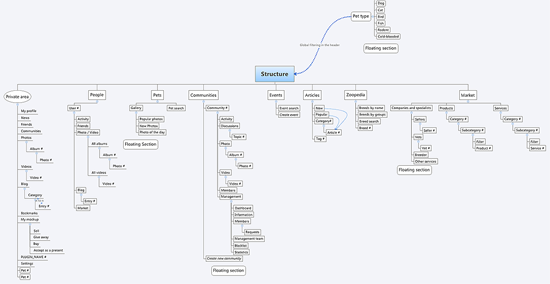 Some Known Incorrect Statements About Web Architecture Design
Some Known Incorrect Statements About Web Architecture Design
Due to the fact that these tasks belong to a UX designer or organization expert, you require the results of their activities. At the end of this stage, you'll wind up with a user profile and user circulation that highlight the way a user believes and interacts with a product. When you have all the necessary details about the item and individuals who use/will usage it, you can go to the next step.
The primary activities to carry out at this phase are content stock and content audit. Let's take a look at them. The goal of this activity is to create a list of information components on all the pages of a site and categorize them by topic and sub-topic. This includes the following items: Headings and subheadings Texts Media files (images, video, audio) Files (doc, pdf, ppt) URL-links of the pages These aspects are noted in a material template with their qualities included.
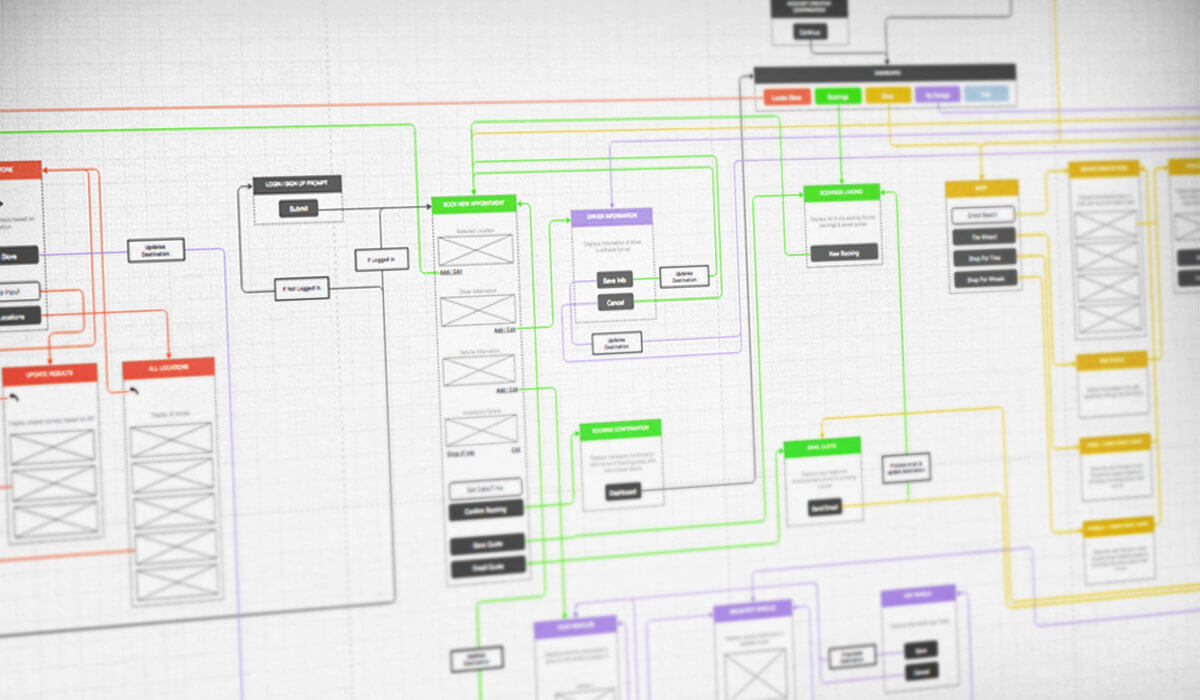 Website Architecture Example Can Be Fun For Anyone
Website Architecture Example Can Be Fun For Anyone
Now, ditch the least essential items, upgrade some pieces of material, and rearrange them for the next steps. This activity applies both to new products and to app or website redesigns. The next action includes organizing material into different classifications. For this purpose, you will require the aid of prospective users.
The Basic Principles Of Website Architecture Best Practices
You require a taxonomy to do it. Taxonomy is another word for classification. When it comes to IA, it's an attempt to group various unstructured pieces of info structure and provide descriptions. Taxonomization used on the Airbnb websiteSource: The most popular and the most crucial method that allows taxonomizing the content is card sorting.
The point of the activity is to see straight how users view the item's material pieces. Card sorting is generally carried out in small groups of 15-20 individuals, where they have to explain and sort 30-60 cards with pieces of info into various classes. The cards consist of topics that should be categorized, or pieces of material that need to be explained.
The participants categorize subjects as they select and in the order that makes sense to them. This method enables you to comprehend how the users believe in terms of classification. Open type is used to develop new items. with pre-designed classifications. This method of card sorting is usually applied in redesign.

Enough Already! 15 Things About website architecture diagram We're Tired of Hearing
The Single Strategy To Use For Website Architecture Best Practices
Table of ContentsWebsite Architecture Best Practices - The FactsThe smart Trick of Website Architecture Example That Nobody is DiscussingThe Facts About Website Architecture Design UncoveredWeb Architecture Design Can Be Fun For Everyone
Imagine this scenario: You check out a website and hang around trying to find the information you require. You click one link, then another, and again, and once again But you turn up empty you can't find anything helpful. Whether you're a product owner or designer, you do not want your site to be a maze with nothing but annoying blind alleys.
It deals with the chaos, developing a clear structure for a website, an app, or a program. In this article, we'll describe how you can create exceptional info architecture. When you reach a new location, you need something to assist you. If you're spending a weekend in an unfamiliar city, you need to speak with a map.
It's the exact same https://en.search.wordpress.com/?src=organic&q=website architecture diagram with any unknown place: You do not desire to lose time and get lost, so you need a guidance. is the science of structuring content as it is applied to news sites or blogs, online shops, scheduling apps, downloadable software application, etc. The objective of details architecture is to categorize the content in a clear and reasonable way and arrange it according to relations between the content pieces, permitting users to find what they need with less effort.
The Basic Principles Of Website Architecture Design
Info architecture is a part of interaction design that considers content, context, and users. This means that user requirements, business objectives, and different kinds of material must be taken into consideration while structuring a product's details. Generally, details architecture design falls under the care of UX and UI designers or a details designer.
 The Main Principles Of Website Architecture
The Main Principles Of Website Architecture
An info architect who works along with a UX designer can focus exclusively on details architecture design, while a UX designer devotes more time to research study. In this case, an architect produces a variety of deliverables, which we will explain in the area on the actions of IA advancement. No matter the title, a person who deals with info architecture should begin with the rules that assist to achieve the goal of IA.
To produce a strong details architecture, you should begin with comprehensive research, so it all begins with discovering your users' needs and habits. The five actions of details architecture development The goal of this stage is to discover a user's requirements. You should deal with a customer profile and the results of consumer and stakeholder interviews.
The Ultimate Guide To Website Architecture Design
 Getting My Website Architecture Diagram To Work
Getting My Website Architecture Diagram To Work
Due to the fact that these jobs belong to a UX designer or service analyst, you need the outcomes of their activities. At the end of this stage, you'll wind up with a user profile and user flow that highlight the method a user believes and connects with a product. When you have all the necessary details about the product and the individuals who use/will use it, you can go to the next action.
The primary activities to carry out at this stage are content inventory and content audit. Let's look at them. The goal of this activity is to create a list of info aspects on all the pages of a site and classify them by subject and sub-topic. This consists of the following products: Headings and subheadings Texts Media files (images, video, audio) Documents (doc, pdf, ppt) URL-links of the pages These components are noted in a material template with their qualities included.
 The Definitive Guide to Website Architecture Diagram
The Definitive Guide to Website Architecture Diagram
Now, ditch the least essential items, update some pieces of material, and reorganize them for the next actions. This activity applies both to new products and to app or site redesigns. The next action includes grouping material into different great architecture categories. For this function, you will require the aid of possible users.
The Greatest Guide To Website Architecture
You require a taxonomy to do it. Taxonomy is another word for category. In the case of IA, it's an effort to group different unstructured pieces of information and provide them descriptions. Taxonomization used on the Airbnb websiteSource: The most popular and the most important method that allows taxonomizing the material is card sorting.
The point of the activity is to see directly how users view the item's content pieces. Card sorting is typically carried out in small groups of 15-20 participants, where they have to explain and arrange 30-60 cards with pieces of info into various classes. The cards contain topics that should be classified, or pieces of content that should be explained.
The participants categorize subjects as they choose and in the order that makes sense to them. This approach allows you to comprehend how the users believe in regards to category. Open type is utilized to develop brand-new products. with pre-designed classifications. This technique of card sorting is normally used in redesign.

20 Insightful Quotes About world
Getting The Website Architecture Diagram To Work
Table of ContentsTop Guidelines Of Website Architecture Best PracticesThe Ultimate Guide To Website ArchitectureHow Website Architecture can Save You Time, Stress, and Money.The Best Guide To Website Architecture Best Practices
Picture this scenario: You check out a site and hang out searching for the information you require. You click one link, then another, and once again, and again However you turn up empty you can't discover anything helpful. Whether you're a product owner or designer, you do not desire your site to be a labyrinth with nothing but irritating blind alleys.
It deals with the chaos, producing a clear structure for a site, an app, or a program. In this article, we'll describe how you can produce excellent details architecture. When you reach a new place, you require something to direct you. If you're spending a weekend in an unknown city, you need to seek advice from a map.
It's the same with any unfamiliar location: You don't want to lose time and get lost, so you need a guidance. is the science of structuring content as it is applied to news sites or blog sites, online shops, booking apps, downloadable software, etc. The objective of details architecture is to categorize the content in a clear and easy to understand method and arrange it according to relations between the material pieces, allowing users to discover what they need with less effort.
3 Simple Techniques For Website Architecture Example
Info architecture is a part of interaction design that considers material, context, and users. This indicates that user needs, company goals, and different types of content need to be taken into consideration while structuring a product's information. Typically, information architecture design falls under the care of UX and UI designers or an information designer.
 What Does Website Architecture Diagram Do?
What Does Website Architecture Diagram Do?
An info designer who works together with a UX designer can concentrate exclusively on information architecture style, while a UX designer devotes more time to research study. In this case, a designer develops a number of deliverables, which we will describe in the area on the actions of IA development. Regardless of the title, a person who works on details architecture need to start with the guidelines that assist to achieve the goal of IA.
To create a strong details architecture, you need to start with comprehensive research, so everything begins with learning your users' needs and behaviors. The five actions of information architecture development The aim of this stage is to find out about a user's needs. You must work with a consumer profile and the outcomes of consumer and stakeholder interviews.
8 Easy Facts About Website Architecture Design Described
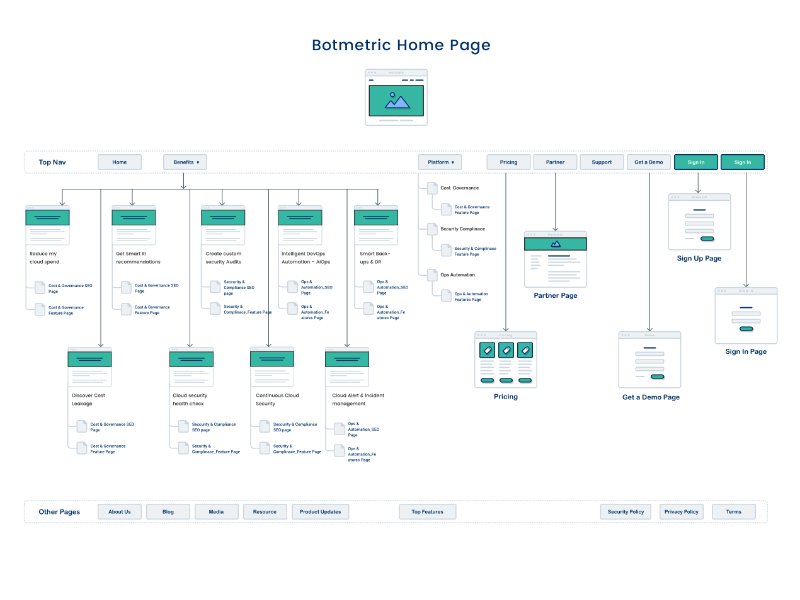 Indicators on Website Architecture You Should Know
Indicators on Website Architecture You Should Know
Because these jobs come from a UX designer or service analyst, you need the outcomes of their activities. At the end of this stage, you'll end up with a user profile and user flow that show the way a user thinks and connects with an item. When you have all the essential details about the product and individuals who use/will usage it, you can go to the next step.
The main activities to carry out at this stage are content stock and content audit. Let's look at them. The goal of this activity is to develop a list of info elements on all the pages of a website and classify them by topic and sub-topic. This includes the following items: Headings and subheadings Texts Media files (images, video, audio) Documents (doc, pdf, ppt) URL-links of the pages These elements are listed in a content design template with their qualities consisted of.
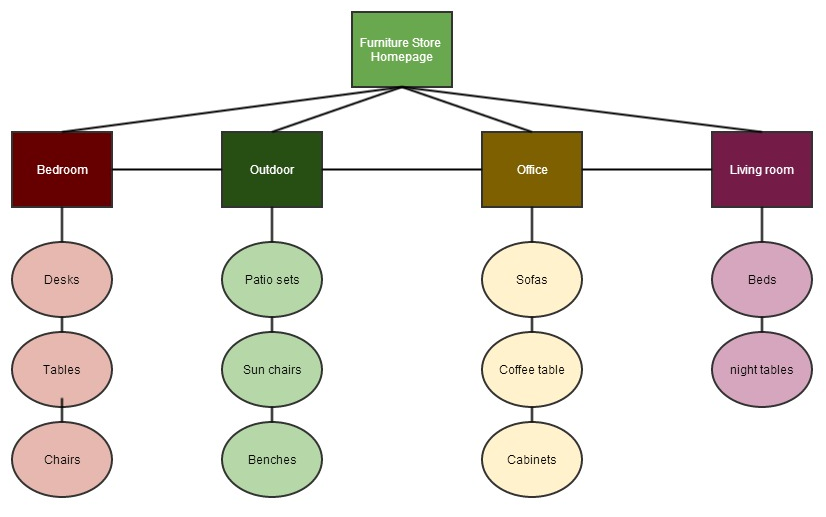 structure itemprop="caption">Website Architecture Things To Know Before You Get This
structure itemprop="caption">Website Architecture Things To Know Before You Get This
Now, ditch the least essential items, update some pieces of material, and reorganize them for the next actions. This activity is appropriate both to new items and to app or website redesigns. The next step involves grouping material into various categories. For this purpose, you will require the help of possible users.
The Buzz on Website Architecture Best Practices
You need a taxonomy to do it. Taxonomy is another word for category. When it comes to IA, it's an effort to group different disorganized pieces of info and provide them descriptions. Taxonomization used on the Airbnb websiteSource: The most popular and the most crucial technique that enables taxonomizing the material is card sorting.
The point of the activity is to see straight how users perceive the product's content pieces. Card sorting is normally conducted in small groups of 15-20 participants, where they have to explain and arrange 30-60 cards with pieces of details into various classes. The cards consist of subjects that must be classified, or pieces of content that should be described.
The individuals categorize topics as they pick and in the https://www.washingtonpost.com/newssearch/?query=website architecture diagram order that makes sense to them. This method enables you to comprehend how the users think in terms of classification. Open type is utilized to design brand-new items. with pre-designed categories. This technique of card sorting is generally applied in redesign.

7 Things You Should Not Do With SEO This Week Episode 189
The 6-Second Trick For Web Architecture Design
Table of ContentsThe 9-Minute Rule for Website Architecture Best PracticesWhat Does Website Architecture Design Do?The smart Trick of Website Architecture Diagram That Nobody is Talking AboutSome Known Details About Website Architecture Best Practices
composed on notepads. When developing cards, use the results of material inventory. Different topics have to be on different index cards. They need to have numbers and some ought to have blank spaces, so the individuals can create their own names for classifications. As an outcome, you'll see the approximate structure of an item and proceed with the very first models.
Every website or an app requires a solid navigation system that assists a user find what they need. As quickly as you have the outcomes of card sorting activities, you will comprehend how to embody and categorize the material in truth. This action embraces navigation design, labeling, and website mapping.
When working on navigation, keep in mind that no matter which pages the visitors come from, they must have the ability to find what they need. A navigation system includes lots of components buttons, menus, and tables of material. There are four main type: shows the details hierarchy from primary elements to their sub-categories.
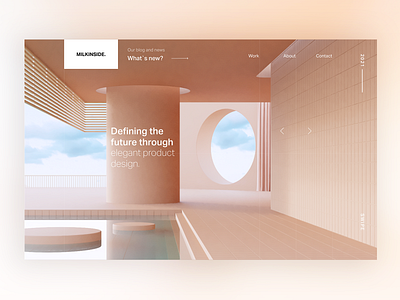 Examine This Report about Web Architecture Design
Examine This Report about Web Architecture Design
A drop-down menu on ASOSSource: present across all the pages, this navigation allows the users to get to the main page from website architecture example every area, for instance, left- or right-sided, top-centered, sticky menus, footers, or hamburger menus. Left-sided menu on The New York TimesSource: The shows the navigation of a specific location: a page or a part of a website and its material.
The Greatest Guide To Website Architecture
Regional navigation on the Oxford University websiteSource: associates with specific material, like document, page, https://www.washingtonpost.com/newssearch/?query=website architecture diagram video-audio things, or associated items. Keep in mind to make a clickable logo that directs a user right to a homepage. These types can complement each other, however the main principle of excellent navigation is to avoid overwhelming with guiding aspects.
It can navigate a user through a multi-stage procedure or a complicated site. You can pick the very best choice for place and menu type by performing an A/B and multivariate screening for conversion optimization. The proper label gives users appropriate conceptualization of the category they are handling. Throughout this procedure, name all parts of IA with headings and subheadings.
Examples are the best description, so highlight your labels. Expedia website labeling with names and iconsSource: Expedia When navigation and labeling are prepared, outline the whole structure, creating a site map. Site map development can be preceded by a mind map. Let's take a look at the role of mind mapping in this procedure.
As a tool, a mind map is extremely useful for guideline, allowing somebody to understand the structure of the material by sensible series and to establish associations. Use it to an app or a website to visually represent the entities of an item and follow the rational structure of the content.
Our Website Architecture Design Statements
But first, you have to select the hierarchy design pattern. Design pattern is a way to structure the material. It allows you to choose the direction at the very start of IA building or site redesign activities. There are numerous IA style patterns, which we describe below: one that serves a single function, for instance, downloading an app or supplying contact information.
This pattern appropriates for brochure-like sites. Flat structureSource:, et al. includes a web page and similarly essential subpages. This type is one of the most typical choices for sites due to the fact that it's simple, familiar, and deep enough for many utilize cases. Index page pattern similar to index pages pattern, however more branchy: Each subpage has one or more subpages.
 Some Known Incorrect Statements About Website Architecture Example
Some Known Incorrect Statements About Website Architecture Example
Strict hierarchy pattern joins a number of types of hierarchies in case the information from one subpage overlaps the material of another. Co-existing hierarchy pattern As quickly as you have picked design pattern, you can apply it in addition to the results of card sorting in website mapping. A sitemap is a method to illustrate the hierarchy of content and screen navigation.
It's a map of the content and categories of a site. A portfolio website sitemapSource: On a sitemap, you picture the entire hierarchy of material. You can make it on paper or using various tools like WriteMaps, MindNode, Scapple, MindManager, XMind. Show the sitemap to stakeholders and send it to designers so that they can comprehend what to do next: Exist any essential modifications that need to be used before a product goes into production? Still, there is another phase prior to production prototyping.
See This Report on Website Architecture Example
While a sitemap is a plan of material hierarchy, a wireframe embodies the last appearance. A wireframe is a schematic representation of a site or an app that shows the navigation and interface of a website. An IA wireframe reveals all the pages and screens of a product, with headings, tags, labels, and grey boxes where the material will be put.

10 Facts About website architecture template That Will Instantly Put You in a Good Mood
The Definitive Guide for Website Architecture
Table of ContentsThe 20-Second Trick For Website ArchitectureFascination About Website ArchitectureSome Known Facts About Website Architecture Example.3 Easy Facts About Website Architecture Best Practices Explained
Imagine this circumstance: You visit a website and spend website architecture example time searching for the information you require. You click one link, then another, and again, and once again However you come up empty you can't discover anything useful. Whether you're a product owner or designer, you do not want your site to be a maze with nothing however irritating blind streets.
It handles the chaos, producing a clear structure for a website, an app, or a program. In this post, we'll discuss how you can create outstanding info architecture. When you get here at a brand-new location, you need something to assist you. If you're spending a weekend in an unfamiliar city, you have to seek advice from a map.
It's the exact same with any unfamiliar area: You do not want to lose time and get lost, so you require an assistance. is the science of structuring material as it is used to news websites or blog sites, online shops, booking apps, downloadable software, and so on. The goal of info architecture is to classify the content in a clear and easy to http://query.nytimes.com/search/sitesearch/?action=click&contentCollection®ion=TopBar&WT.nav=searchWidget&module=SearchSubmit&pgtype=Homepage#/website architecture diagram understand method and arrange it according to relations in between the material pieces, enabling users to find what they need with less effort.
8 Easy Facts About Web Architecture Design Described
Details architecture belongs of interaction design that thinks about content, context, and users. This means that user needs, business objectives, and various kinds of content should be taken into consideration while structuring an item's details. Usually, info architecture style falls under the care of UX and UI designers or a details architect.
 Website Architecture Design Can Be Fun For Everyone
Website Architecture Design Can Be Fun For Everyone
An info designer who works along with a UX designer can focus entirely on details architecture design, while a UX designer devotes more time to research. In this case, an architect creates a number of deliverables, which we will explain in the section on the actions of IA development. Despite the title, an individual who deals with details architecture must begin with the guidelines that help to achieve the goal of IA.
To develop a strong info architecture, you need to begin with comprehensive research, so everything begins with learning your users' needs and habits. The 5 steps of info architecture advancement The objective of this phase is to learn about a user's needs. You must work with a client profile and the results of consumer and stakeholder interviews.
All about Website Architecture Diagram
 The Main Principles Of Website Architecture Example
The Main Principles Of Website Architecture Example
Because these jobs come from a UX designer or organization analyst, you require the results of their activities. At the end of this phase, you'll end up with a user profile and user flow that illustrate the method a user thinks and communicates with a product. When you have all the required details about the item and individuals who use/will use it, you can go to the next step.
The primary activities to perform at this phase are content stock and content audit. Let's take a look at them. The objective of this activity is to develop a list of details aspects on all the pages of a site and classify them by subject and sub-topic. This consists of the following products: Headings and subheadings Texts Media files (images, video, audio) Documents (doc, pdf, ppt) URL-links of the pages These elements are listed in a material template with their characteristics consisted of.
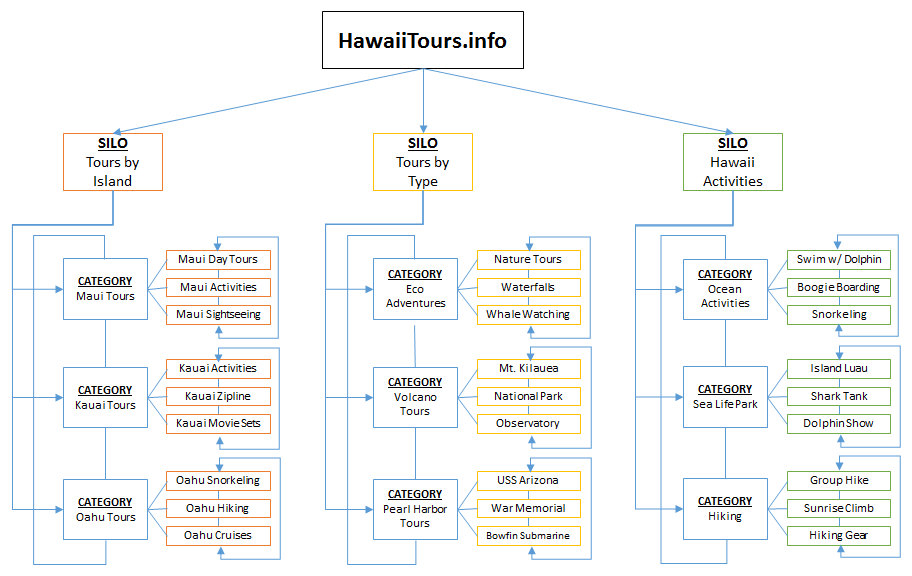 More About Website Architecture Best Practices
More About Website Architecture Best Practices
Now, ditch the least important products, update some pieces of content, and rearrange them for the next steps. This activity is suitable both to new products and to app or site redesigns. The next action involves organizing content into different categories. For this purpose, you will require the help of possible users.
5 Simple Techniques For Website Architecture Best Practices
You require a taxonomy to do it. Taxonomy is another word for category. When it comes to IA, it's an attempt to group various disorganized pieces of details and provide descriptions. Taxonomization used on the Airbnb websiteSource: The most popular and the most important technique that enables taxonomizing the material is card sorting.
The point of the activity is to see directly how users view the product's content pieces. Card sorting is normally conducted in small groups of 15-20 individuals, where they have to explain and arrange 30-60 cards with pieces of information into different classes. The cards contain topics that must be categorized, or pieces of material that should be described.
The participants categorize subjects as they pick and in the order that makes good sense to them. This method allows you to understand how the users believe in terms of classification. Open type is used to create brand-new items. with pre-designed categories. This approach of card sorting is normally used in redesign.

7 Things You Should Not Do With SEO This Week Episode 189
Our Web Architecture Design PDFs
Table of ContentsAbout Website ArchitectureNot known Facts About Website Architecture DesignThe 30-Second Trick For Website Architecture DesignWebsite Architecture Example Things To Know Before You Get This
written on pieces of paper. When producing cards, utilize the outcomes of content stock. Separate subjects have to be on different index cards. They need to have numbers and some need to have blank areas, so the participants can produce their own names for categories. As a result, you'll see the approximate structure of a product and continue with the first prototypes.
Every website or an app requires a solid navigation system that helps a user discover what they need. As soon as you have the outcomes of card sorting activities, you will comprehend how to embody and categorize the content in reality. This action welcomes navigation style, labeling, and website mapping.
When dealing with navigation, keep in mind that no matter which pages the visitors originate from, they should be able to discover what they require. A navigation system consists of numerous aspects buttons, menus, and tables of material. There are 4 main type: shows the details hierarchy from primary components to their sub-categories.
 Getting My Website Architecture Example To Work
Getting My Website Architecture Example To Work
A drop-down menu on ASOSSource: present across all the pages, this navigation enables the users to get to the primary page from every area, for example, left- or right-sided, top-centered, sticky menus, footers, or hamburger menus. Left-sided menu on The New York TimesSource: The shows the navigation of a particular location: a page or a part of a site and its material.
The Website Architecture Diagram Diaries
Local navigation on the Oxford University websiteSource: connects to specific content, like document, page, video-audio item, or related products. Remember to make a clickable logo that directs a user right to a homepage. These types can match each other, however the primary concept of great navigation is to avoid straining with directing components.
It can browse a user through a multi-stage process or an intricate site. You can choose the very best choice for place and menu type by carrying out an A/B and multivariate screening for conversion optimization. The appropriate label offers users proper concept of the category they are dealing with. During this procedure, name all parts of IA with headings and subheadings.
Examples are the finest description, so illustrate your labels. Expedia website labeling with names and iconsSource: Expedia When navigation and labeling are ready, lay out the entire structure, producing a site map. Site map development can be preceded by a mind map. Let's take http://query.nytimes.com/search/sitesearch/?action=click&contentCollection®ion=TopBar&WT.nav=searchWidget&module=SearchSubmit&pgtype=Homepage#/website architecture diagram a look at the function of mind mapping in this treatment.
As a tool, a mind map is extremely useful for instruction, allowing somebody to comprehend the structure of the material by rational series and to establish associations. Use it to an app or a website to visually represent the entities of an item and follow the sensible structure of the content.
Website Architecture Design for Beginners
However initially, you have to select the hierarchy style pattern. Design pattern is a way to structure the material. It permits you to select the instructions at the very beginning of IA structure or website redesign activities. There are numerous IA style patterns, which we describe below: one that serves a single purpose, for instance, downloading an app or providing contact information.
This pattern is appropriate for brochure-like sites. Flat structureSource:, et al. consists of a house page and equally crucial subpages. This type is among the most common choices for sites because it's basic, familiar, and deep enough for many use cases. Index page pattern comparable to index pages pattern, however more branchy: Each subpage has one or more subpages.
 Website Architecture Example Fundamentals Explained
Website Architecture Example Fundamentals Explained
Rigorous hierarchy pattern unites a number of types of hierarchies in case the information from one subpage overlaps the material of another. Co-existing hierarchy pattern As quickly as you have actually decided on design pattern, you can use it along with the outcomes of card sorting in site mapping. A sitemap is a way to show the hierarchy of material and display navigation.
It's a map of the content and classifications of a site. A portfolio site sitemapSource: On a sitemap, you envision the entire hierarchy of content. You can make it on paper or utilizing different tools like WriteMaps, MindNode, Scapple, MindManager, XMind. Program the sitemap to stakeholders and send it to developers so that they can comprehend what to do next: Exist any essential changes that need to be website architecture example applied before a product enters into production? Still, there is another stage before production prototyping.
10 Simple Techniques For Website Architecture Design
While a sitemap is a scheme of material hierarchy, a wireframe embodies the final look. A wireframe is a schematic representation of a website or an app that displays the navigation and user interface of a website. An IA wireframe shows all the pages and screens of a product, with headlines, tags, labels, and grey boxes where the material will be placed.

Forget SEO This Week Episode 189 - Website Architecture Best Practices: 3 Replacements You Need to Jump On
Some Known Factual Statements About Website Architecture Best Practices
Table of ContentsThe Main Principles Of Website Architecture Some Known Details About Website Architecture Example The Buzz on Website Architecture ExampleThings about Website Architecture Best Practices
written on pieces of paper. When developing cards, use the outcomes of material stock. Separate topics have to be on different index cards. They need to have numbers and some must have blank spaces, so the participants can create their own names for classifications. As an outcome, you'll see the approximate structure of a product and continue with the very first prototypes.
Every website or an app requires a strong navigation system that helps a user find what they need. As quickly as you have the results of card sorting activities, you will comprehend how to embody and classify the content in reality. This step embraces navigation design, labeling, and site mapping.
When working on navigation, bear in mind that no matter which pages the visitors originate from, they should be able to find what they require. A navigation system consists of many aspects buttons, menus, and tables of material. There are four primary type: reveals the information website architecture example hierarchy from main components to their sub-categories.
 Rumored Buzz on Website Architecture Design
Rumored Buzz on Website Architecture Design
A drop-down menu on ASOSSource: present throughout all the pages, this navigation makes it possible for the users to get to the primary page from every location, for example, left- or right-sided, top-centered, sticky menus, footers, or hamburger menus. Left-sided menu on The New York TimesSource: The programs the navigation of a specific location: a page or a part of a website and its content.
The Main Principles Of Website Architecture Template
Local navigation on the Oxford University websiteSource: associates with particular content, like document, page, video-audio object, or associated products. Remember to make a clickable logo design that directs a user right to a homepage. These types can complement each other, however the main concept of excellent navigation is to prevent overloading with guiding components.
It can browse a user through a multi-stage procedure or an intricate website. You can choose the finest choice for area and menu type by carrying out an A/B and multivariate screening for conversion optimization. The appropriate label provides users correct conceptualization of the category they are handling. Throughout this procedure, name all parts of IA with headings and subheadings.
Examples are the very best description, so highlight your labels. Expedia website labeling with names and iconsSource: Expedia When navigation and labeling are prepared, lay out the entire structure, producing a site map. Site map development can be preceded by a mind map. Let's take a look at the role of mind mapping in this procedure.
As a tool, a mind map is extremely useful for direction, enabling somebody to comprehend the structure of the material by rational sequence and to develop associations. Use it http://www.bbc.co.uk/search?q=website architecture diagram to an app or a website to visually represent the entities of a product and follow the rational structure of the material.
Top Guidelines Of Website Architecture
But initially, you have to pick the hierarchy design pattern. Style pattern is a way to structure the content. It allows you to choose the instructions at the very start of IA building or website redesign activities. There are a number of IA design patterns, which we describe listed below: one that serves a single purpose, for instance, downloading an app or providing contact info.
This pattern is suitable for brochure-like sites. Flat structureSource:, et al. includes a home page and equally essential subpages. This type is one of the most typical options for websites since it's easy, familiar, and deep enough for the majority of utilize cases. Index page pattern comparable to index pages pattern, but more branchy: Each subpage has one or more subpages.
 All about Website Architecture Diagram
All about Website Architecture Diagram
Strict hierarchy pattern unites several kinds of hierarchies in case the info from one subpage overlaps the material of another. Co-existing hierarchy pattern As quickly as you have chosen on design pattern, you can use it together with the results of card sorting in website mapping. A sitemap is a way to highlight the hierarchy of material and screen navigation.
It's a map of the content and classifications of a site. A portfolio website sitemapSource: On a sitemap, you envision the entire hierarchy of material. You can make it on paper or using various tools like WriteMaps, MindNode, Scapple, MindManager, XMind. Program the sitemap to stakeholders and send it to designers so that they can understand what to do next: Exist any important changes that need to be used prior to an item enters into production? Still, there is one more phase before production prototyping.
Not known Details About Website Architecture Diagram
While a sitemap is a scheme of material hierarchy, a wireframe embodies the final look. A wireframe is a schematic representation of a website or an app that displays the navigation and interface of a site. An IA wireframe shows all the pages and screens of a product, with headings, tags, labels, and grey boxes where the content will be placed.

What's Holding Back the SEO This Week Episode 189 - Website Architecture Industry?
7 Easy Facts About Website Architecture Diagram Described
Table of ContentsThe 2-Minute Rule for Website Architecture DiagramThe Website Architecture Example PDFsWeb Architecture Design Fundamentals ExplainedThe Buzz on Website Architecture Example
Picture this scenario: You go to a http://www.bbc.co.uk/search?q=website architecture diagram site and invest time trying to find the details you need. You click one link, then another, and once again, and again However you show up empty you can't find anything useful. Whether you're a product owner or designer, you don't want your website to be a maze with absolutely nothing however annoying blind streets.
It handles the chaos, producing a clear structure for a website, an app, or a program. In this post, we'll describe how you can create outstanding details architecture. When you show up at a brand-new location, you need something to direct you. If you're investing a weekend in an unknown city, you need to consult a map.
It's the very same with any unknown location: You don't desire to lose time and get lost, so you need an assistance. is the science of structuring content as it is used to news sites or blogs, online shops, scheduling apps, downloadable software, and so on. The objective of details architecture is to classify the content in a clear and easy to understand method and organize it according to relations in between the content pieces, enabling users to find what they need with less effort.
Top Guidelines Of Website Architecture Example
Details architecture belongs of interaction style that thinks about content, context, and users. This implies that user needs, business objectives, and different kinds of content must be taken into consideration while structuring a product's info. Normally, info architecture design falls under the care of UX and UI designers or an information architect.
 The Only Guide for Website Architecture Example
The Only Guide for Website Architecture Example
An info designer who works in addition to a UX designer can focus solely on info architecture design, SEO This Week Episode 189 while a UX designer devotes more time to research. In this case, a designer develops a variety of deliverables, which we will explain in the section on the steps of IA advancement. Despite the title, a person who works on info architecture must start with the rules that help to attain the objective of IA.
To develop a strong details architecture, you should begin with extensive research study, so it all starts with learning your users' requirements and habits. The 5 steps of details architecture development The goal of this stage is to discover a user's needs. You should deal with a consumer profile and the outcomes of client and stakeholder interviews.
Rumored Buzz on Web Architecture Design
 The Single Strategy To Use For Web Architecture Design
The Single Strategy To Use For Web Architecture Design
Since these tasks come from a UX designer or business expert, you require the results of their activities. At the end of this phase, you'll end up with a user profile and user circulation that show the way a user thinks and engages with an item. When you have all the required details about the item and the people who use/will use it, you can go to the next action.
The primary activities to carry out at this phase are content inventory and content audit. Let's look at them. The objective of this activity is to develop a list of information aspects on all the pages of a site and classify them by subject and sub-topic. This includes the following items: Headings and subheadings Texts Media files (images, video, audio) Files (doc, pdf, ppt) URL-links of the pages These elements are listed in a content design template with their characteristics consisted of.
 Some Ideas on Website Architecture Example You Need To Know
Some Ideas on Website Architecture Example You Need To Know
Now, ditch the least crucial products, upgrade some pieces of material, and rearrange them for the next actions. This activity is suitable both to brand-new products and to app or website redesigns. The next action includes grouping material into different classifications. For this purpose, you will need the assistance of possible users.
The Facts About Website Architecture Template Uncovered
You require a taxonomy to do it. Taxonomy is another word for category. In the case of IA, it's an attempt to group different disorganized pieces of information and offer them descriptions. Taxonomization applied on the Airbnb websiteSource: The most popular and the most important strategy that allows taxonomizing the material is card sorting.
The point of the activity is to see directly how users view the product's material pieces. Card sorting is typically carried out in little groups of 15-20 individuals, where they have to explain and arrange 30-60 cards with pieces of details into various classes. The cards include topics that should be categorized, or pieces of content that need to be described.
The individuals classify subjects as they choose and in the order that makes sense to them. This method allows you to understand how the users think in terms of category. Open type is utilized to create new products. with pre-designed categories. This approach of card sorting is usually used in redesign.

What NOT to Do in the web architecture design Industry
Some Known Factual Statements About Web Architecture Design
Table of ContentsWebsite Architecture Template - QuestionsWebsite Architecture Diagram Fundamentals ExplainedSome Ideas on Website Architecture You Need To Know10 Easy Facts About Website Architecture Shown
composed on pieces of paper. When creating cards, utilize the results of content stock. Different subjects need to be on different index cards. They ought to have numbers and some need to have blank spaces, so the participants can produce their own names for categories. As an outcome, you'll see the approximate structure of a product and proceed with the very first models.
Every website or an app requires a solid navigation system that assists a user discover what they require. As quickly as you have the results of card sorting activities, you will comprehend how to https://en.search.wordpress.com/?src=organic&q=website architecture diagram embody and classify the material in truth. This action embraces navigation style, labeling, and site mapping.
When working on navigation, bear in mind that no matter which pages the visitors come from, they must be able to find what they need. A navigation system consists of numerous components buttons, menus, and tables of material. There are 4 main type: shows the information hierarchy from primary components to their sub-categories.
 Get This Report on Web Architecture Design
Get This Report on Web Architecture Design
A drop-down menu on ASOSSource: present throughout all the pages, this navigation allows the users to get to the main page from every place, for instance, left- or right-sided, top-centered, sticky menus, footers, or hamburger menus. Left-sided menu on The New york city TimesSource: The programs the navigation of a specific area: a page or a part of a site and its material.
Some Ideas on Website Architecture Example You Should Know
Local navigation on the Oxford University websiteSource: relates to particular content, like document, page, video-audio object, or related products. Keep in mind to make a clickable logo design that directs a user right to a homepage. These types can complement each other, but the main concept of great navigation is to avoid straining with guiding aspects.
It can browse a user through a multi-stage process or a complex site. You can pick the very best alternative SEO This Week Episode 189 for area and menu type by carrying out an A/B and multivariate testing for conversion optimization. The appropriate label provides users proper conceptualization of the classification they are dealing with. During this treatment, name all parts of IA with headings and subheadings.
Examples are the finest description, so highlight your labels. Expedia site labeling with names and iconsSource: Expedia When navigation and labeling are prepared, detail the entire structure, developing a website map. Website map creation can be preceded by a mind map. Let's take a look at the role of mind mapping in this procedure.
As a tool, a mind map is very useful for direction, allowing somebody to comprehend the structure of the content by logical sequence and to develop associations. Apply it to an app or a site to aesthetically represent the entities of a product and follow the sensible structure of the material.
Not known Incorrect Statements About Website Architecture Design
But first, you need to choose the hierarchy design pattern. Design pattern is a method to structure the material. It enables you to select the direction at the very start of IA building or site redesign activities. There are a number of IA design patterns, which we describe below: one that serves a single purpose, for instance, downloading an app or supplying contact details.
This pattern is ideal for brochure-like websites. Flat structureSource:, et al. includes a web page and equally crucial subpages. This type is among the most typical choices for sites since it's basic, familiar, and deep enough for most utilize cases. Index page pattern similar to index pages pattern, however more branchy: Each subpage has one or more subpages.
 Fascination About Website Architecture
Fascination About Website Architecture
Stringent hierarchy pattern unifies numerous kinds of hierarchies in case the info from one subpage overlaps the material of another. Co-existing hierarchy pattern As quickly as you have actually chosen style pattern, you can use it along with the outcomes of card sorting in site mapping. A sitemap is a method to illustrate the hierarchy of material and screen navigation.
It's a map of the material and categories of a website. A portfolio website sitemapSource: On a sitemap, you envision the entire hierarchy of material. You can make it on paper or using different tools like WriteMaps, MindNode, Scapple, MindManager, XMind. Show the sitemap to stakeholders and send it to designers so that they can comprehend what to do next: Are there any essential changes that have to be used prior to an item enters into production? Still, there is another stage prior to production prototyping.
Some Ideas on Website Architecture Template You Should Know
While a sitemap is a plan of content hierarchy, a wireframe embodies the final look. A wireframe is a schematic representation of a website or an app that displays the navigation and interface of a site. An IA wireframe shows all the pages and screens of a product, with headlines, tags, labels, and grey boxes where the material will be placed.

10 Undeniable Reasons People Hate SEO This Week Episode 189 - Website Architecture Best Practices
Things about Website Architecture
Table of ContentsSome Of Website Architecture ExampleThe Best Guide To Website ArchitectureGetting My Website Architecture To WorkNot known Details About Website Architecture Design
written on notepads. When producing cards, use the results of content stock. Separate topics have to be on separate index cards. They must http://www.bbc.co.uk/search?q=website architecture diagram have numbers and some need to have blank spaces, so the individuals can produce their own names for classifications. As an outcome, you'll see the approximate structure of a product and proceed with the first models.
Every site or an app needs a solid navigation system that helps a user discover what they need. As soon as you have the outcomes of card sorting activities, you will understand how to embody and categorize the content in truth. This step welcomes navigation design, labeling, and website mapping.
When working on navigation, bear in mind that no matter which pages the visitors come from, they need to be able to find what they need. A navigation system consists of numerous components buttons, menus, and tables of content. There are 4 primary type: reveals the info hierarchy from primary components to their sub-categories.
 Website Architecture Template Can Be Fun For Anyone
Website Architecture Template Can Be Fun For Anyone
A drop-down menu on ASOSSource: present across all the pages, this navigation enables the users to get to the primary page from every area, for example, left- or right-sided, top-centered, sticky menus, footers, or hamburger menus. Left-sided menu on The New york city TimesSource: The shows the navigation of a specific area: a page or a part of a site and its content.
The Single Strategy To Use For Website Architecture Design
Local navigation on the Oxford University websiteSource: associates with specific content, like document, page, video-audio item, or associated products. Keep in mind to make a clickable logo that directs a user right to a homepage. These types can complement each other, however the primary concept of good navigation is to avoid overloading with guiding aspects.
It can navigate a user through a multi-stage process or a complicated website. You can select the very best choice for area and menu type by conducting an A/B and multivariate testing for conversion optimization. The right label offers users proper concept of the classification they are handling. Throughout this procedure, name all parts of IA with headings and subheadings.
Examples are the very best description, so show your labels. Expedia website labeling with names and iconsSource: Expedia When navigation and labeling are prepared, describe the whole structure, creating a website map. Website map creation can be preceded by a mind map. Let's take a look at the function of mind mapping in this procedure.
As SEO This Week Episode 189 a tool, a mind map is extremely useful for instruction, permitting someone to understand the structure of the content by logical series and to establish associations. Apply it to an app or a site to visually represent the entities of an item and follow the sensible structure of the content.
A Biased View of Web Architecture Design
But initially, you have to choose the hierarchy design pattern. Style pattern is a method to structure the content. It permits you to choose the instructions at the very beginning of IA structure or site redesign activities. There are numerous IA style patterns, which we describe below: one that serves a single function, for example, downloading an app or supplying contact info.
This pattern appropriates for brochure-like sites. Flat structureSource:, et al. includes a house page and equally crucial subpages. This type is among the most typical options for sites due to the fact that it's simple, familiar, and deep enough for the majority of utilize cases. Index page pattern comparable to index pages pattern, however more branchy: Each subpage has several subpages.
 The Main Principles Of Website Architecture Best Practices
The Main Principles Of Website Architecture Best Practices
Stringent hierarchy pattern unifies a number of kinds of hierarchies in case the details from one subpage overlaps the content of another. Co-existing hierarchy pattern As soon as you have actually chosen style pattern, you can use it together with the results of card sorting in site mapping. A sitemap is a method to show the hierarchy of content and display screen navigation.
It's a map of the material and categories of a site. A portfolio site sitemapSource: On a sitemap, you picture the entire hierarchy of content. You can make it on paper or utilizing various tools like WriteMaps, MindNode, Scapple, MindManager, XMind. Show the sitemap to stakeholders and send it to designers so that they can comprehend what to do next: Exist any important modifications that have to be applied prior to a product goes into production? Still, there is another stage before production prototyping.
Not known Details About Website Architecture
While a sitemap is a plan of material hierarchy, a wireframe embodies the final appearance. A wireframe is a schematic representation of a website or an app that displays the navigation and user interface of a site. An IA wireframe reveals all the pages and screens of a product, with headlines, tags, labels, and grey boxes where the content will be placed.

17 Superstars We'd Love to Recruit for Our SEO This Week Episode 189 - Website Architecture Example Team
The 10-Minute Rule for Website Architecture Design
Table of ContentsThe smart Trick of Website Architecture That Nobody is Talking AboutNot known Details About Website Architecture Design How Web Architecture Design can Save You Time, Stress, and Money.Website Architecture Design Fundamentals Explained
composed on pieces of paper. When producing cards, utilize the results of material stock. Different topics need to be on different index cards. They must have numbers and some should have blank areas, so the participants can create their own names for classifications. As an outcome, you'll see the approximate structure of a product and proceed with the very first prototypes.
Every website or an app requires a strong navigation system that helps a user discover what they require. As quickly as you have the outcomes of card sorting activities, you will comprehend how to embody and categorize the content in reality. This action welcomes navigation style, labeling, and site mapping.
When dealing with navigation, bear in mind that no matter which pages the visitors originate from, they must be able to discover what they need. A navigation system includes numerous aspects buttons, menus, and tables of content. There are 4 main type: reveals the info hierarchy from primary components to their sub-categories.
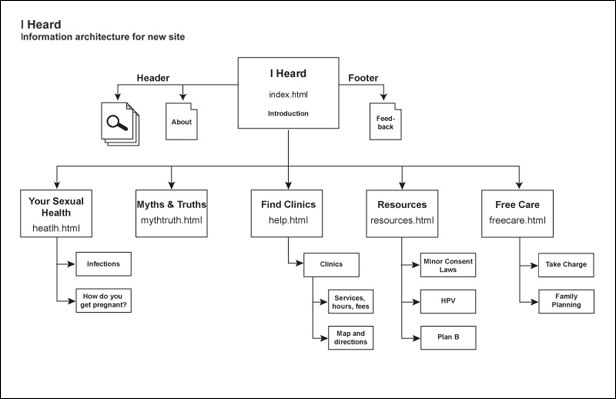 Excitement About Website Architecture
Excitement About Website Architecture
A drop-down menu on ASOSSource: present across all the pages, this navigation allows the users to get to the main page from every place, for example, left- or right-sided, top-centered, sticky menus, footers, or hamburger menus. Left-sided menu on The New york city TimesSource: The shows the navigation of a specific area: a page or a part of a site and its content.
An Unbiased View of Website Architecture Diagram
Local navigation on the Oxford University websiteSource: relates to particular material, like file, page, video-audio things, or associated items. Remember to make a clickable logo that directs a user right to a homepage. These types can complement each other, but the main concept of great navigation is to prevent straining with directing elements.
It can browse a user through a multi-stage process or a complex site. You can choose on the very best option for location and menu type by performing an A/B and multivariate testing for conversion optimization. The correct label gives users proper conceptualization of the classification they are dealing with. During this treatment, name all parts of IA with headings and subheadings.
Examples are the very best description, so show your labels. Expedia website labeling with names and iconsSource: Expedia When navigation and labeling are prepared, lay out the whole structure, developing a site map. Site map development can be preceded by a mind map. Let's look at the role of mind mapping in this treatment.
As a tool, a mind map is very useful for direction, permitting someone to comprehend the structure of the content by rational sequence and to develop associations. Apply it to an app or a site to visually represent the entities of an item and follow the rational structure of the content.
More About Website Architecture
But first, you need to pick the hierarchy design pattern. Style pattern is a way to structure the content. It enables you to pick the instructions at the very start of IA structure or website redesign activities. There are a number of IA style patterns, which we describe below: one that serves a single function, for example, downloading an app or supplying contact information.
This pattern appropriates for brochure-like websites. Flat structureSource:, et al. consists of a home page and similarly essential subpages. This type is one of the most typical choices for websites since it's basic, familiar, and deep enough for the majority of use cases. Index page pattern similar to index pages pattern, however more branchy: Each subpage has one or more subpages.
 The 25-Second Trick For Website Architecture Design
The 25-Second Trick For Website Architecture Design
Rigorous hierarchy pattern unifies a number of types of hierarchies in case the info from https://www.washingtonpost.com/newssearch/?query=website architecture diagram one subpage overlaps the content of another. Co-existing hierarchy pattern As soon as you have actually chosen on style pattern, you can apply it in addition to the outcomes of card sorting in site mapping. A sitemap is a way to highlight the hierarchy of material and screen navigation.
It's a map of the material and classifications of a site. A portfolio website sitemapSource: On a sitemap, you picture the entire hierarchy of content. You can make it on paper or using different tools like WriteMaps, MindNode, Scapple, MindManager, XMind. Program the sitemap to stakeholders and send it to designers so that they can understand what to do next: Exist any essential changes that need to be applied prior to a product goes into production? Still, there is one more phase prior to production prototyping.
The Single Strategy SEO This Week Episode 189 To Use For Website Architecture Example
While a sitemap is a plan of content hierarchy, a wireframe embodies the final look. A wireframe is a schematic representation of a website or an app that displays the navigation and user interface of a website. An IA wireframe reveals all the pages and screens of a product, with headlines, tags, labels, and grey boxes where the content will be placed.

